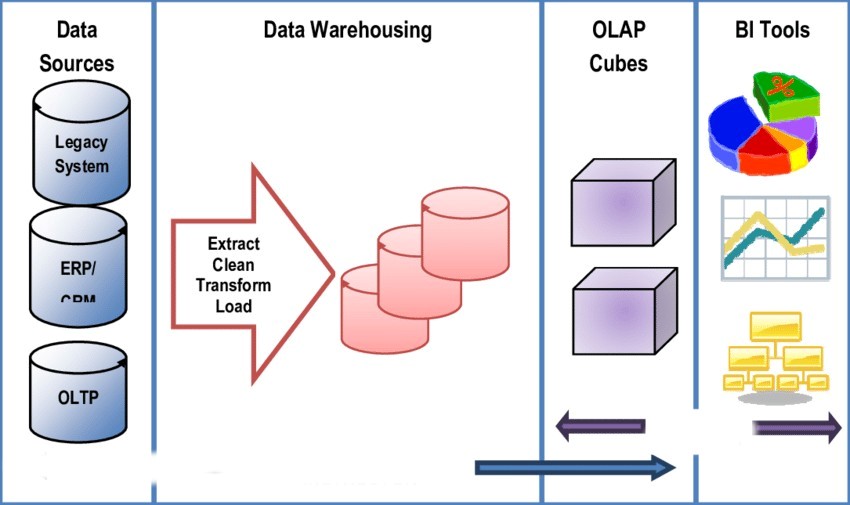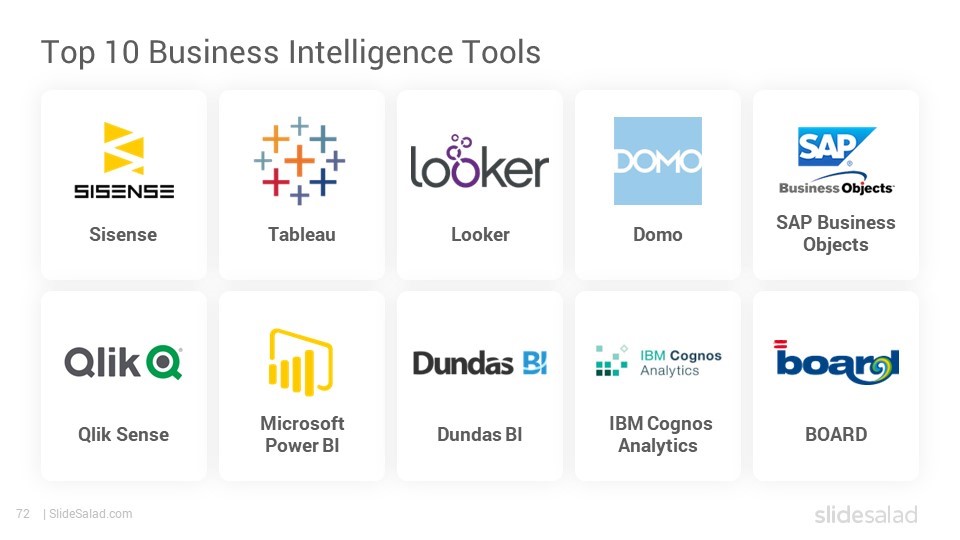Purpose of the article: This article will introduce user to Business Intelligence and how it has evolved over the years.
Intended Audience: BI Users /QA Managers/ QA Director/QA Organizations
Tools and Technology: Business Intelligence is a process, and we have many tools available in the market (Mentioned in Top BI tools in current industry).
Keywords: Business Intelligence, Analytics, Data analytics
Introduction:
Business Intelligence (BI) is essential for modern organizations because it empowers them to make data-driven decisions, gain a competitive edge, streamline operations, and drive growth. It enables businеssеs to turn raw data into actionable insights, helping them thrive in today’s data-driven business environment.

History of BI:
The history of BI is a tale of technological advancements and the growing demand for data analysis by organizations to make informed decisions. Here’s a brief overview of key milestones in BI history:
- 1950s-1960s: Early Beginnings
BI began in the 1950s and 60s when companies began using computers for reporting and data processing.
- 1970s: Decision Support Systems (DSS)
The 1970s introduced the concept of DSS, providing executives and managers with data analysis tools for decision-making.
- 1980s: Emergence of Data Warehousing
Data warehousing, which combines data from multiple sources into a single repository, first appeared in the 1980s.
- 1990s: Rise of OLAP and Data Mining
The 1990s saw the popularity of Online Analytical Processing (OLAP) technologies for interactive multidimensional data analysis.
- 2000s: BI Tools and Dashboards
The 2000s marked the proliferation of user-friendly BI tools and software, simplifying data access and analysis for non-technical users.
- 2010s: Self-Service BI and Big Data
The 2010s brought self-service BI platforms, enabling business users to create their own reports and perform data analysis without IT support.
- 2020s and Beyond: AI and Advanced Analytics
In the current decade and beyond, AI and machine learning have assumed a significant role in BI, empowering organizations with predictive analytics and AI-driven insights.
Over time, BI has shifted from IT-centric to a user-friendly discipline that empowers individuals in organizations to extract insights from data. As technology advances, BI is poised to play an even larger role in decision-making across various sectors.
Current state of BI
The current trends and technologies have significantly evolved the discipline of BI. Recognizing the ever-changing environment of BI, where new advancements appear on a regular basis, is imperative. Currently, these are the main aspects of BI:
- Self-Service BI: Business users can now build reports and dashboards without heavily relying on tools like Tableau, Power BI, and QlikView.
- Advanced Analytics: For more in-depth understanding and data-driven forecasts, BI solutions combined Machine Learning and predictive analytics.
- Data Integration: Essential tools such as ETL and data warehousing combine data from different sources.
- Cloud-Based BI: Scalable and affordable BI solutions were provided by AWS, Azure, and Google Cloud.
- Mobile BI: Reports and dashboards could be accessed via mobile apps using BI tools.
- Data Governance: GDPR, HIPAA, and other compliance were given top priority by organizations.
- NLP in BI: NLP made it possible to use natural language queries to interact with data.
- Embedded Business Intelligence: The use of software to embed analytics into workflows.
- Real-Time Analytics: To make decisions more quickly, there is an increasing need for data that is current.
- Data Democratization: Analytics and data are now more widely available across roles and departments.
- Data Visualization: Tools focused on interactive features and different chart kinds.
- AI-Driven Insights: Predictive analytics, automated reporting, and anomaly detection were made possible with the help of AI and ML.
- Cooperation and Sharing: BI technologies made it easier to share ideas and promote a culture that is data driven.
Major Concepts of BI Testing
Automation Integration:
- As BI solutions grew more complex, automation became prevalent, handling repetitive tasks, data comparisons, and regression testing. Test automation frameworks like Selenium for web-based BI apps gained popularity.
Data Quality and ETL Testing:
- BI heavily relies on accuracy of data, testing focus expanded to include data quality and ETL processes. Automated tools and scripts were built to validate data transformations, integrity, and consistency during the ETL process.
AI and Machine Learning in Testing:
- The adoption of AI and ML in BI led to the induction of AI-based testing tools that offer capabilities like intelligent test case generation, anomaly detection, and predictive analysis.
Cloud-Based BI Testing:
- With the rise of cloud-based BI solutions, testing strategies adapted to address the challenges associated with cloud environments like data security, integration with cloud services, and the performance of BI applications.
Advanced Analytics and Predictive Testing:
- The integration of advanced analytics and predictive modelling into BI solutions led to the development of testing strategies to validate the accuracy and reliability of predictive algorithms and analytics outputs.
Edge Computing and IoT BI Testing:
- The emergence of Edge Computing and IoT in BI solutions prompted the development of testing strategies that account for the unique challenges posed by distributed computing and real-time data processing at the edge.
Future BI Testing:
Interoperability Testing: As BI solutions increasingly integrate with diverse data sources, databases, and applications, interoperability testing will become more critical.
Explainable AI Testing: With the growing importance of AI and Machine Learning in BI, testing efforts will focus on ensuring the explainability and interpretability of AI-driven insights.
Collaborative Testing: Enhanced collaboration between business analysts, data scientists, and testing teams will be essential for ensuring that BI solutions meet business requirements and deliver actionable insights.
Top BI tools in current industry:

According to the Gartner Magic Quadrant, Microsoft Power BI stands as the top Business Intelligence and Analytics Platform in 2022, acknowledged for its comprehensive and potent capabilities by Gartner for the fourth consecutive year.
Conclusion:
The evolution of BI has seen remarkable advancements, transforming it from its origins to a vital decision-making tool across various industries. As BI testing continues to refine its methods and adapt to emerging technologies, it remains integral in ensuring the reliability and accuracy of data-driven insights. In the future, BI testing shows potential for innovation and improvement to meet the evolving needs of a data-driven world.
Author Bio:

Madhusudhan Vardhineni
Principal Software Engineer-IQE
IT Professional with 9+ years of experience in ETL and BI testing. Expertise in test planning and tracking along with Onshore & Offshore delivery execution of testing projects. Experience in wide range of ETL tools like Informatica, ODI & SSIS and BI tools like OBIEE, QlikView and Power BI. Expertise in using test management tools like QC, ALM, MTM, JIRA, TFS, Spira test.


